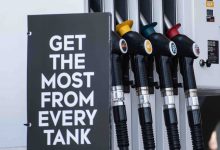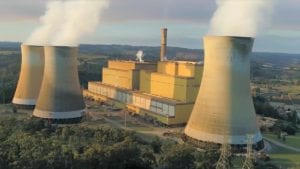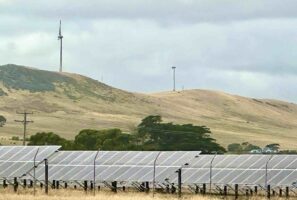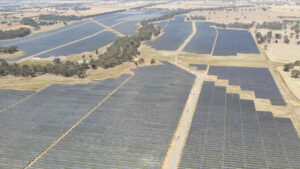The Federal Government has asserted that gas is the essential transition fuel. Gas industry people have been saying this for at least 30 years and it’s never been true in all that time, and it’s not true now.
Gas has trended around a 10 to 12 per cent share of the National Electricity Market’s electricity mix over the past decade. Its biggest year was when gas prices were around $1/GJ in the LNG ramp up phase. That didn’t last and it was never going to last.

At first, the problem for gas was that it was far more expensive than coal, now it’s far more expensive than renewable energy.
Ironically, one of the things that might have made gas attractive as an interim fuel, namely a carbon price, is regarded as criminal within the LNP hierarchy. We’ll come back to the carbon side of gas production and consumption later.
Zero evidence has been presented to justify pushing gas. Think of all the work and studies that went into designing the Carbon Pollution Reduction Scheme [CPRS] and all the credibility testing that scheme was subjected to.
That’s all too hard for a backroom favourites player like energy minister Angus Taylor. It’s much easier to just stand up and announce gas is the answer, and take the public for a fool.
The latest gas project to be floated – like an Alan Bond Dirigble – is a trans continental gas pipeline from Karratha in West Australia to Moonba on the South Australia/NSW border.

Gas prices are low, today but historically have been volatile
Predicting gas prices is like predicting the price of anything, a fool’s game. In my career gas went from $3/GJ up to $5/GJ, down to $1/GJ during the LNG ramp and then up to $11/GJ as LNG exports moved Australia from surplus to deficit.
East Coast gas supply has gone from abundant in the hey day of Bass Strait and then the Cooper Basin, to tight with Oil Search arguing for a gas pipeline from New Guinea to Australia, to a total surplus when QLD CSG was first found to be viable, back to medium term very tight as all the surplus gas and then some was sold as contracted LNG.
Famously, at the time the PNG pipeline was actively promoted, a Morgan Stanley analyst promised to run naked down George Street if it was ever built. Fortunately for all concerned it wasn’t built.
Frankly, it’s the same in other markets. In the US LNG import terminals were built to manage gas shortages and then with the discovery of shale gas and shale oil prices collapsed precipitously and the US is now a large gas exporter with seemingly endless cheap gas.
Deregulation has made long term contracts harder
Once upon a time Gas and Fuel Corp in Victoria and AGL in NSW were monopolies in the gas business in their states. As such they were able to underwrite contracts over a 20-30 year horizon for very large volumes of gas.
Gas prices over that period of time were essentially fixed and for all intents and purposes there was no gas-basin-on-gas-basin competition.
Those contracts underpinned development of the Moomba to Sydney pipeline and the development of Longford gas processing plant in Victoria.
Today, however, the gas market is more diversified and complex. Origin is probably the largest domestic aggregator of gas having usurped AGL’s place as the prime supplier to the industrial market. Origin is unlikely to want to contract for 20-30 years anymore than AGL is.
AGL has effectively surrendered its position as the largest gas supplier, although it could have another go.
There is no massive demand for gas powered generation [GPG]. The following figure shows that GPG was expected to decline and then get back to its historic share.
If gas prices were to be much lower on a permanent basis perhaps that would be different.

LNG imports to NSW
There are two relatively serious LNG import proposals. AGL at Cribb Point in Victoria, delayed by environmental issues and the Port Kembla Gas Terminal [PKGT]
The key facts about PKGT for this discussion is that the facility is sized for 130 PJ per year, the capital investment isf $250 million, for a 15 year life and if final investment decision [FID] is reached this year it can be importing gas into NSW by 2022.
ITK continues to assume that the “regasification” cost is about $0.70 per GJ. We estimate that at an approximation to current spot Henry Hub gas of US$2/gj the ex PKGT price if the facility was operating to day would be about A$7.40 GJ.

Pipeline from West Australia A$5-A$6 bn, opex $130m per year
We are fortunate that a recent detailed feasibility study of piped gas from WA is available .
The favoured route was for a 220 PJ per year throughput via a 26” pipe from Karratha to Moomba, a total of 2,900km with a capital cost of $5.3 billion (2018 $) and operating costs including 7 PJ of fuel gas $129 million per year.
Note that this only gets you to Moomba, there are additional costs from the existing pipeline network to get to the East Coast markets.
ACIL assume an input gas price at Karratha of $5/GJ, but personally I’d think it would be at least that. Lets say $5, It takes 7 years to build the pipe and gas prices can change a lot.
ACIL estimated a tariff of A$2.91 GJ.
The following table compares PKGT to a pipe from WA. It’s amusing that both projects are sponsored by ex Fortescue Minerals people.

Note that the import terminal can source its LNG from anywhere. It could just as easily come from West Australia or from QLD. However if it came from West Australia it first has to be compressed to LNG. At the margin LNG compression opex is about $1 to $1.5 GJ and then are some LNG shipping costs.
It’s quite possible that LNG based on Henry Hub is cheaper in Sydney than LNG sourced from West Australia.
More to the point the import terminal has all the characteristics that reduce risks. The build time is ¼ the pipeline, the capital cost is less than 1/20th of the pipeline and the operating costs are much lower in total $m. A volume of 130 PJ is easier to manage than a volume of 220 PJ.
As we have previously discussed its an open question where Henry Hub gas prices settle in the medium term.
We know that the full cost of extracting gas exceeds the spot price and its partly because of gas being produced as a byproduct to shale oil that keeps prices low. ITK thinks it more likely than not that Henry Hub prices will end up over say US$3 GJ, maybe more.
In any event even if the delivered price was the same the risk to the private sector is far lower from the terminal.
But of course that’s where the Federal Government comes in, at least to mind of Keith Pitt and Angus Taylor. Just get the Federal Government to take all the risk. Of course you are going to PO off anyone on the East Coast, such as Santos that hoped to develop gas reserves, but they can probably be made good in some other way.
Even if the Federal Govt builds the pipeline, GPG still wont be economic
We repeat a table from a previous note that shows, just the short run operating costs of various forms of gas generation. Capital costs also have to be recovered.

ITK believes that batteries will be able to undercut gas in the up to 4 hour market by the time any West Australian pipe is built and possibly even by the time the PKGT is built. And that’s before any carbon tax is imposed. You can see the uptake of batteries in the US and even Australia already.
Some people talk about the value of gas for inertia but by the time any pipeline is built, inertia will be yesterday’s story.
Batteries are clearly way better at frequency control than any other technology, grid forming inverters and the software to run at large scale is almost certain to take over grid control, voltage stability and batteries and inverters can provide fault current.
Combined cycle and open cycle gas record in providing black start and other system services is not all that good.
Hydro in Tasmania and probably pumped hydro in Tasmania can also undercut gas.
There will still be a role for gas for years to come but not the kind of role that requires lots more gas fired generators to be built and certainly not the role that requires a trans contintal pipeline.
It still seems a far better bet to keep the big pipeline in the dream time and supply the relatively modest residential, commercial and industrial markets out of domestic supply potentially supplemented, if commercially warranted, by some imports.










